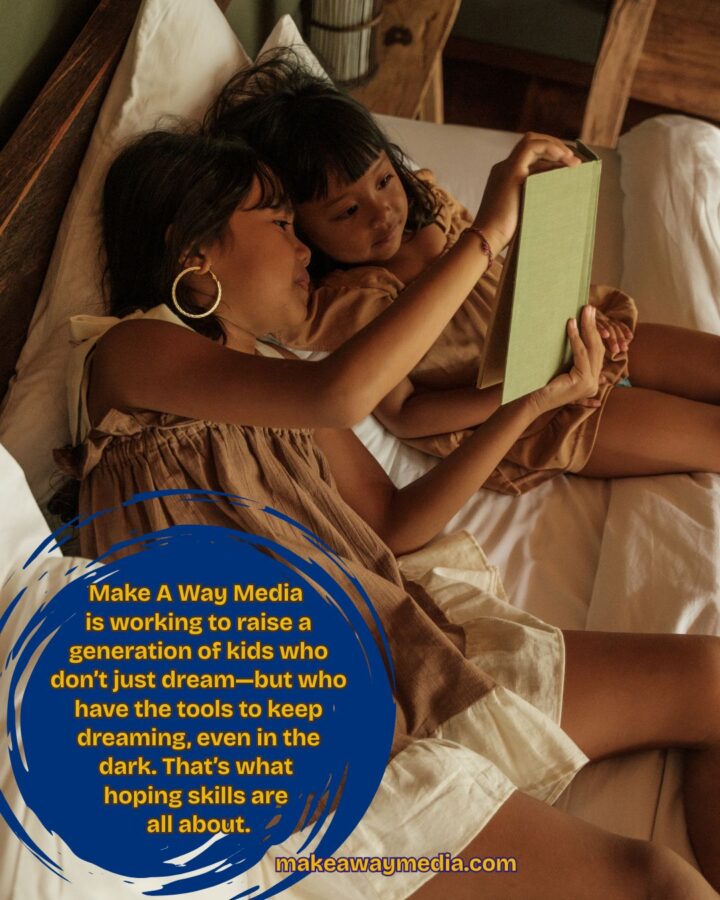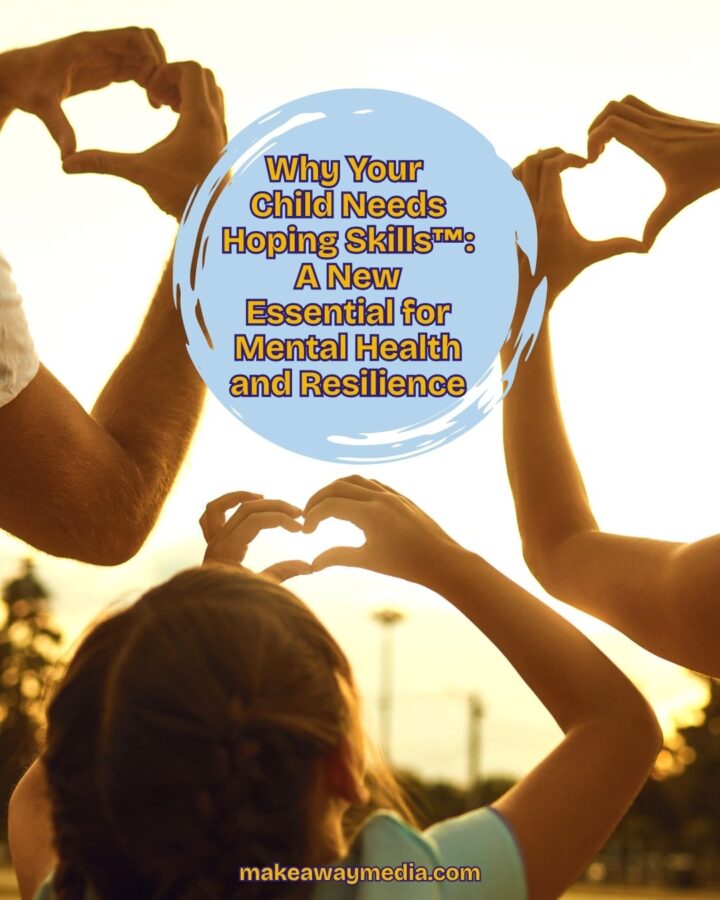 As a therapist, author, and parent, I’ve seen firsthand what happens when a child loses hope—and what happens when they learn how to grow it. That’s why I’ve created a new concept I believe every parent should understand and teach their children: hoping skills.
As a therapist, author, and parent, I’ve seen firsthand what happens when a child loses hope—and what happens when they learn how to grow it. That’s why I’ve created a new concept I believe every parent should understand and teach their children: hoping skills.
Just like reading or riding a bike, hope is something children can learn to do well—but only if we make it a priority. In a world that often overwhelms young minds with fear, comparison, and uncertainty, hoping skills are the life raft they need to stay afloat.
What Are Hoping Skills?
Hoping skills are the intentional, teachable practices that help children:
-
Envision a future they’re excited about
-
Believe that their actions matter
-
Stay resilient through setbacks
-
Learn to emotionally recharge when they feel stuck or discouraged
These are not just feel-good ideas—they are skills. That means they can be practiced, nurtured, and improved over time. And when kids develop strong hoping skills, it changes everything.
Why Hope Isn’t Optional Anymore
Many of the kids we see struggling today aren’t just anxious, angry, or withdrawn—they’re experiencing despair. They’re feeling stuck, powerless, or like they don’t belong. But here’s what we know: hope protects against despair.
Hope has been linked in research to higher academic achievement, stronger relationships, and better physical and emotional health. In short, it’s not a luxury—it’s a necessity.
Yet hope doesn’t just show up. It has to be cultivated. That’s where hoping skills come in.
What Hoping Skills Look Like in Everyday Life
Teaching hope doesn’t have to be complicated. It starts with small, powerful moments:
-
Helping your child set a goal they care about and supporting them in taking steps toward it.
-
Celebrating progress, not just outcomes, so they learn that effort counts.
-
Talking through tough moments and brainstorming ways to try again.
-
Sharing stories—real or fictional—of people who faced hard things and didn’t give up.
-
Encouraging self-talk like: “This is hard, but I can try again,” or “I have felt this before and I got through it.”
You’re already modeling hoping skills every time you say, “Let’s figure this out together,” or “You don’t have to do this alone.”
The Real Impact: Addressing Despair Before It Grows
One of the most heartbreaking things I hear from young people is some version of: “Why even try?”
That’s despair talking. And it doesn’t always look like tears or silence—it can look like anger, withdrawal, defiance, or exhaustion. When a child believes that nothing they do will make a difference, they stop trying. That’s when they need hope literacy the most.
Teaching hoping skills gives them a roadmap back to themselves. It shows them how to:
-
Reconnect with what they want
-
Believe in their ability to grow
-
Know that their life has value and possibility—even when it’s hard
How Parents Can Start Teaching Hoping Skills Today
Here are three steps to begin:
-
Name it. Talk to your child about the concept of hope and why it matters. Introduce “hoping skills” like you would any new subject.
-
Practice it. Help them create a Hope Plan: one small dream + one tiny action step + one person who supports them.
-
Model it. Let them see you practice hope, too. Share your goals. Show how you handle disappointments. Hope is contagious.
Final Thought: Give Your Child the Gift of Hope
Hoping skills are not about denying hard things—they are about building the strength to face them with courage, clarity, and heart.
As parents, you don’t have to have all the answers. You just need to be willing to say: “I believe in you. And I believe we can find a way forward.”
Make A Way Media is working to raise a generation of kids who don’t just dream—but who have the tools to keep dreaming, even in the dark. That’s what hoping skills are all about. Please help us spread this message by commenting and sharing with others. The world needs more hope. The world needs all of us.

